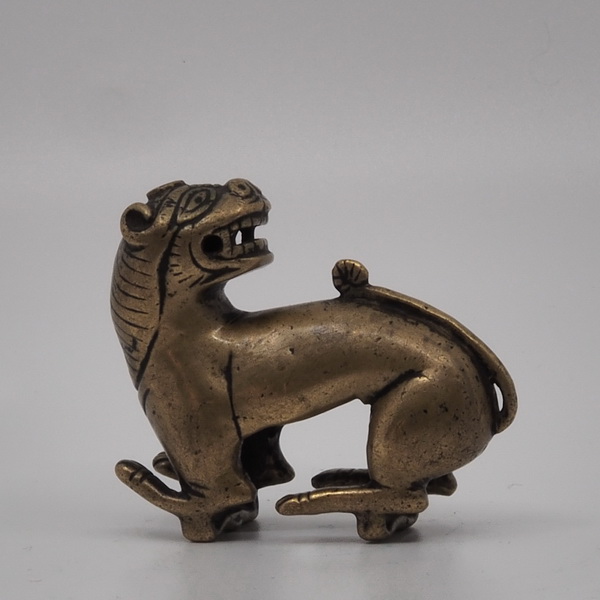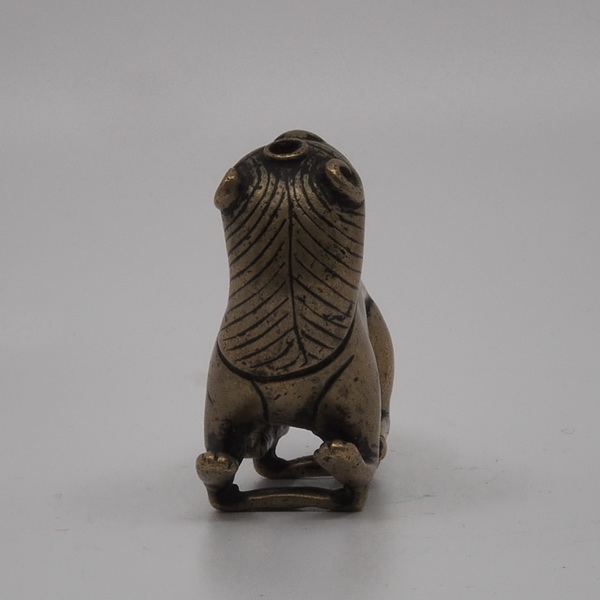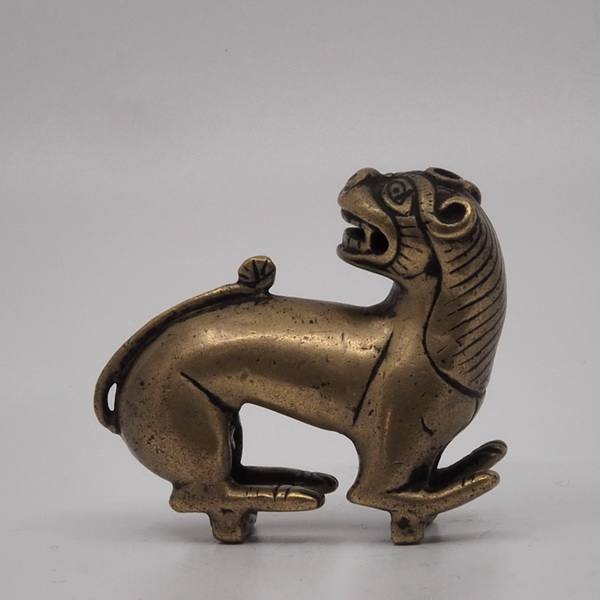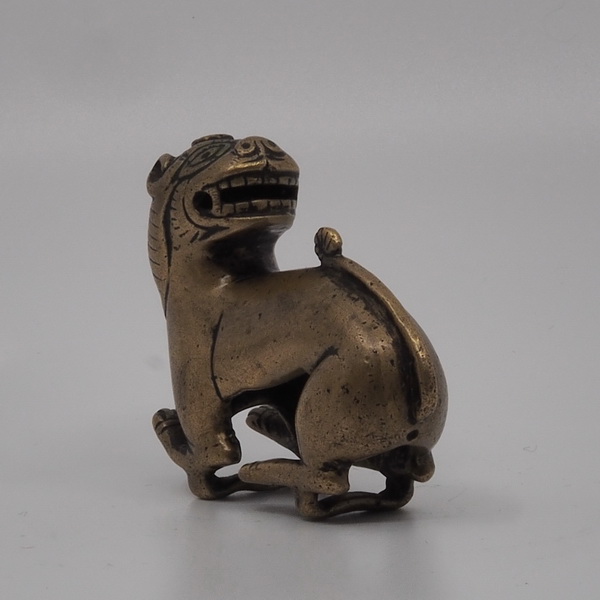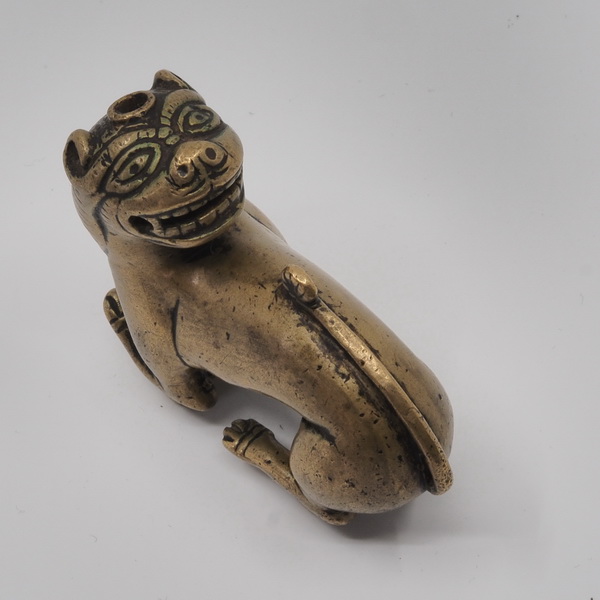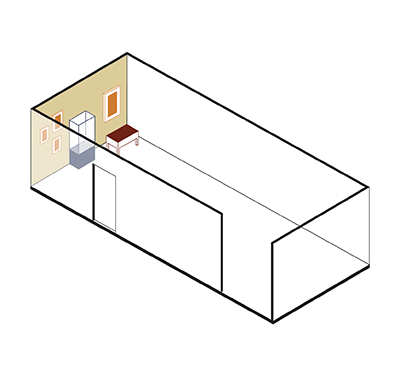ABS 314
Code: ABS 314
Country: Tibet
Style: Imperial Period (Yarlung)
Date: 800 - 900
Dimensions in cm WxHxD: 6.2 x 7 x 3
Materials: Brass
In buddhist iconography we find the lions in their role of dharma protectors supporting the throne of the buddhas and bodhisattvas. They are also found at the entrance of the monasteries and shrines. In the northern areas of Nepal, influenced by Tibetan buddhism and art, the lions have become "snow lions". Actually there are no lions living in the snow mountains, but there are leopards. Snow lions area depicted in white or blue colour with turquoise or orange mane floating in the wind and very wrathful, with big eyes and open mouth. They roam freely in the high snow mountains without any fear, symbolising the wisdom, fearlessness and divine pride of those dharma practitioners who are actually able to live freely in the high snow mountain of the pure mind, without being contaminated by delusions. They are kings of the doctrine because they have achieved the power to subdue all beings with their great love, compassion and wisdom.
The lions as guardians of the temple are represented in pairs at the entrance of shrines and baha compounds.
Beer, Robert, 2010. Die Symbole des tibetischen Buddhismus. München : Diederichs. Pp. 97-98.
Heller, Amy, 1999. Tibetan Art Tracing the Development of Spiritual Ideals and Art in Tibet 600-2000 A.D.. Jaca Books.
Heller, Amy, 1999. Tibetan Art Tracing the Development of Spiritual Ideals and Art in Tibet 600-2000 A.D.. Jaca Books. P. 8
Huntington, John C.; Bangdel, Dina und Arvidsson, Björn (Traduction), 2010. Le Cercle de la Félicité. Art Méditatif Bhouddhique. «The cercle of Bliss. Buddhist meditational Art».. Genève: Duo Visual. Pp.58-59, 66-67

